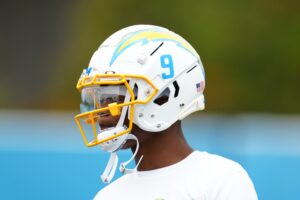Completing the AFC South portion of “The Breakdown,” we examine what the Houston Texans like to do on both sides of the football.
The Breakdown: A Look at the Houston Texans Schematic Philosophy
An Offense Suited for Deshaun Watson
The Texans surprised everyone by trading both their 2017 and 2018 first round picks to go up and get up Clemson quarterback Deshaun Watson. His first NFL experience highlighted the appropriate glimpses of a potential starting quarterback. While it’s a minuscule factor to consider as a preseason performance, it’s increasingly difficult to imagine that head coach Bill O’Brien won’t start the quarterback the franchise mortgaged its future for at some point in the season.
Whether it’s Watson or Tom Savage, O’Brien implements a bevy of quick-strike, timing-based concepts built on three- and five-step drops. We also saw an increase in boots and move-the-pocket throws during Watson’s performance to capitalize on his athleticism and accuracy on the move. Houston has also done a tremendous job of sending high-volume targets their tight end’s way to compensate for the amount of extra coverage forced upon DeAndre Hokpins via tactics such as rotations and bracket coverage.
Defenses doing so naturally opened the middle of the field while corners were left to handle one-on-one matchups. That vacant area over the middle is where the tight ends were able to do their damage from a simple in-line alignment, while O’Brien wasn’t averse to sending multiple targets down the field. Dual tight end formations often forces the defense to show their hand and treat them with base coverage which caps the regularity in which they can feature disguised blitzes and coverage rotations.
Another vital staple of O’Brien’s offense is the use of 3×1. Trip sets put pressure to respond with nickel packages over base defense that can incorporate coverage rotations. When you factor in the speed of Will Fuller and Braxton Miller, split-safeties are tasked with basic coverage duties that limit what defenses can do with them. Running out of 3×1 is also an offensive advantage that stems from the defense being forced to widen with the offense. And running to keep the offense on schedule shifts the burden from your quarterback being forced to convert an outrageous amount of third downs.
Built From the Ground Up
We’re all well aware of the stardom defensive end J.J. Watt has achieved, but the rest of the Texans defensive line is talented in their own respective rights. To combat the attention Watt draws, former defensive coordinator Romeo Crennel employed a variety of different fronts focused on shifting his down guys around and has managed to manufacture efficient pressure with athletes such as Jadeveon Clowney, Whitney Mercilus and D.J. Reader who can handle responsibilities beyond that of their base duties. Don’t expect new defensive coordinator Mike Vrabel to change much of Crennel’s philosophy.
Teams tried to leave Watt unattended to with action working away from him, but he still managed to work his way to longer-developing plays. Crennel also implemented numerous twists and stunts that featured Clowney capitalizing on his bend and athleticism by working around the line and attacking compromised pass-rush lanes. Continuing the theme of pressure includes their threatening man pressure package out of both nickel and dime (but with more of an emphasis on the latter) where they disrupt outside releases, slant their interior guys to the middle of the protection and loop either Watt or Clowney around to exploit the free rushing lane.
Working from a base quarters coverage, the Texans have become adept at identifying the ideal personnel and matchup principles. These matchup-zone concepts are built on the defensive backs dropping to take away their own fourth of the field with a conversion to man coverage if a receiver, once he passed the linebackers, enters their respective area of responsibility. With countless repetitions, Houston has this communication-based coverage down a T and makes it increasingly difficult for offenses to beat them vertically.






